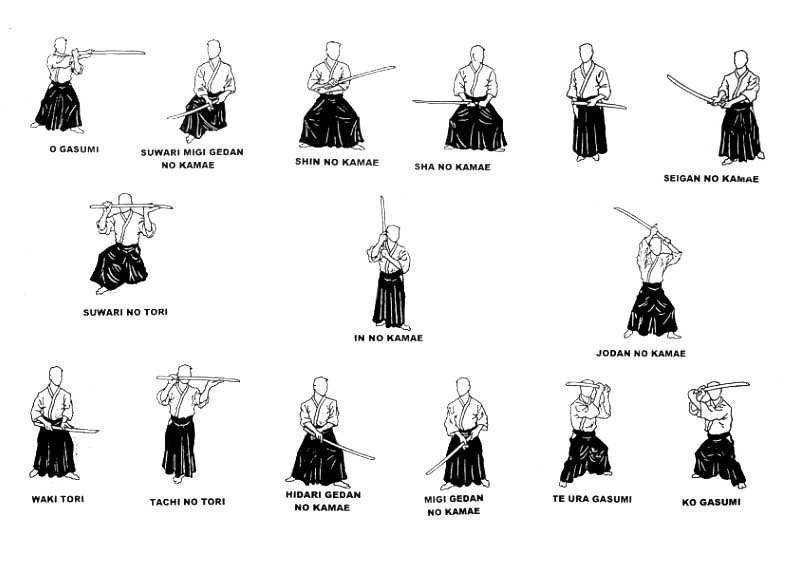
When I contemplated the ei character, I was made to realize that there are just eight distinct cuts possible any other technique, whatever artistic name it may have, is only a variation of the theme. Through my years of learning and teaching fencing, I had sensed that there were only a few cuts in swordsmanship. When I gazed at the finished ei calligraphy, I could actually see the eight cuts of the sword. The first brush stroke, soku, is the thrust of the sword tip the second stroke, roku, is the left and right horizontal cut the third stroke, do, is the vertical cut and so on. As I practiced the ei character (this is to calligraphy what do-re-me is to music), I saw in my mind that these eight strokes of the brush traced the trajectories of the sword when cutting. While teaching kenjutsu in northern China I was inspired with the thought that eiji happo, the eight brush strokes and rules of calligraphy, could be applied to swordsmanship. I also practice Japanese brush calligraphy (shodo). I may offend some, but these techniques were taught to kill effectively with one blow. These techniques differed from kendo and traditional iaido because they were for combat they were exact, precise, and powerful. I attended the Toyama Army Academy for a six month period and qualified as an instructor of jissen budo, or the battlefield martial arts of sword, knife, and bayonet.

Then, in 1939, I was selected to attend the Rikugun Toyama Gakko (Toyama Military Academy). During this four year assignment, I also studied Omori Ryu iaido. In 1935, I was assigned to a Boys' Military School as a kendo and jukendo (bayonet fencing) instructor. During unit training I applied myself rigorously to all aspects of the military arts, and taught kendo to the recruits, officers, and noncommissioned officers of my unit.

In fact, at twenty years old, I was already a third-degree black belt, in both judo and kendo, when I enlisted. I had received training in kendo before joining the Japanese army in 1932. Self training and polishing, the road to discipline and cultivation." "Iai: not killing others not being killed by others. Iai to wa, hito ni kirarezu, hito kirazu. This article first appeared in the Winter 1996 issue of the "SMAA Newsletter."


 0 kommentar(er)
0 kommentar(er)
